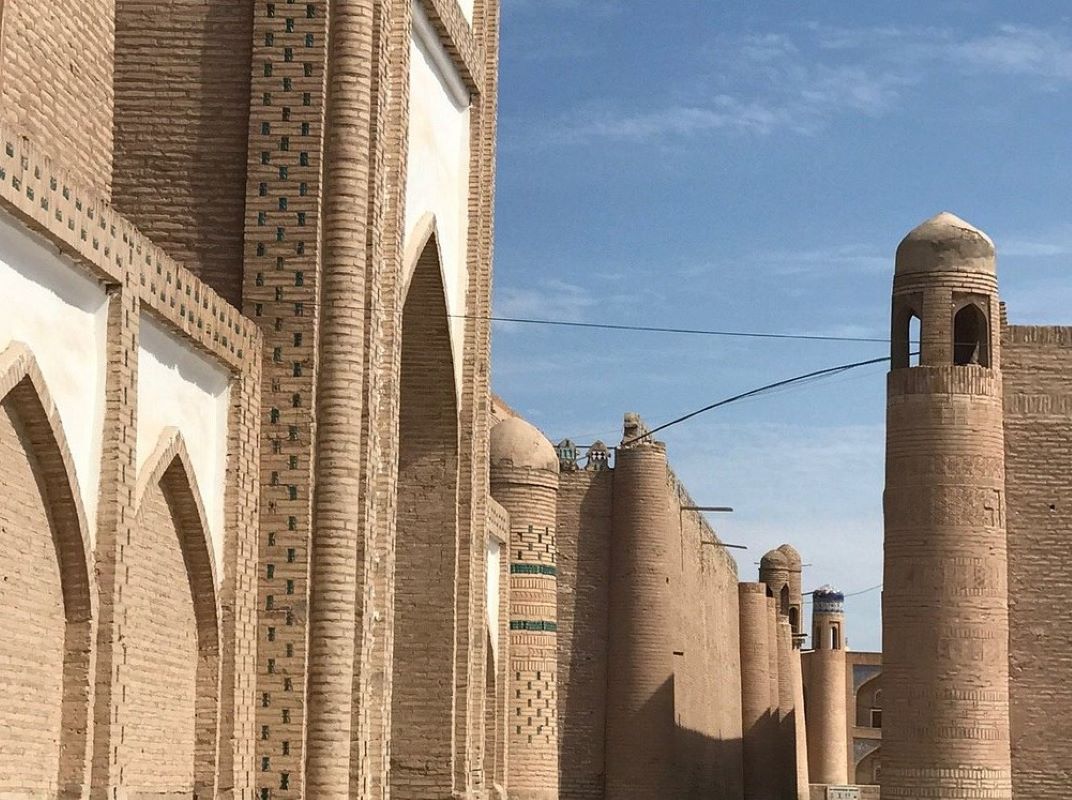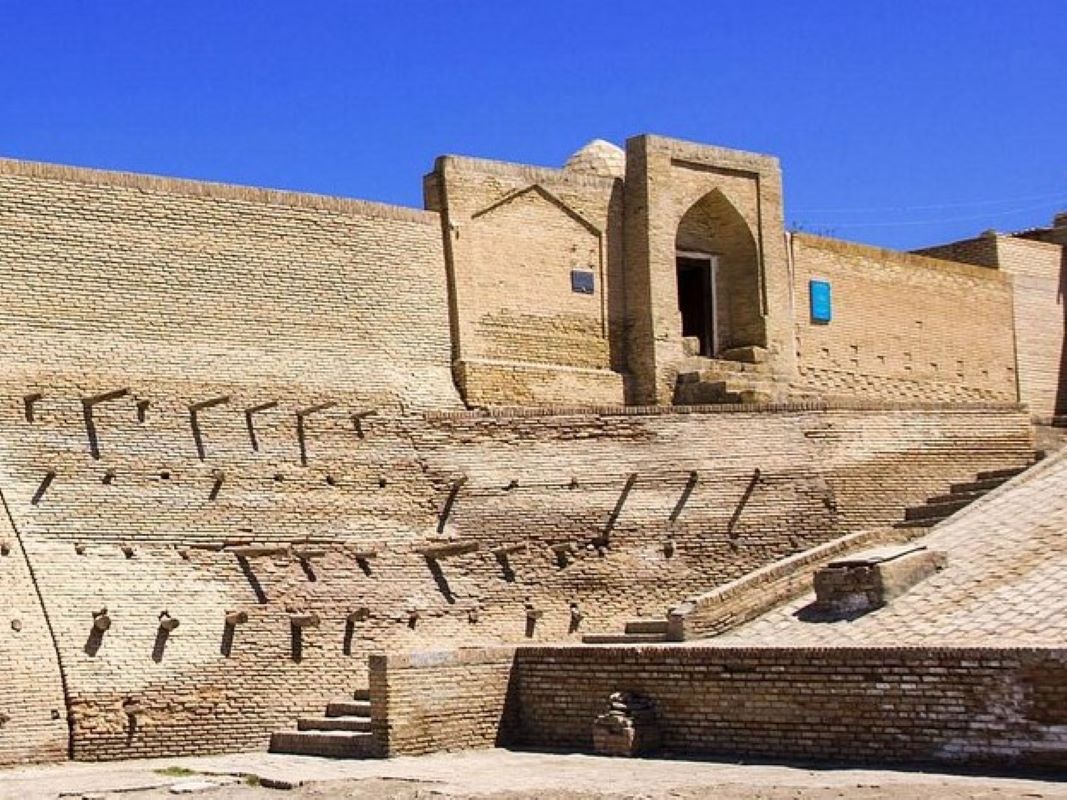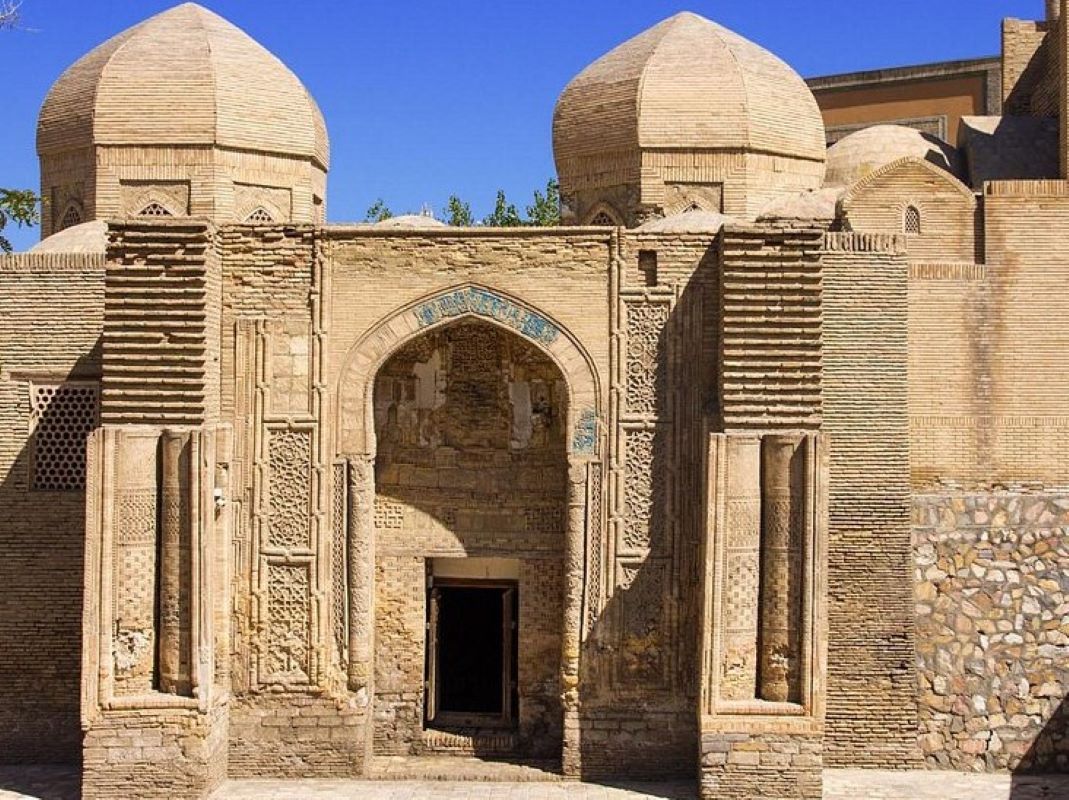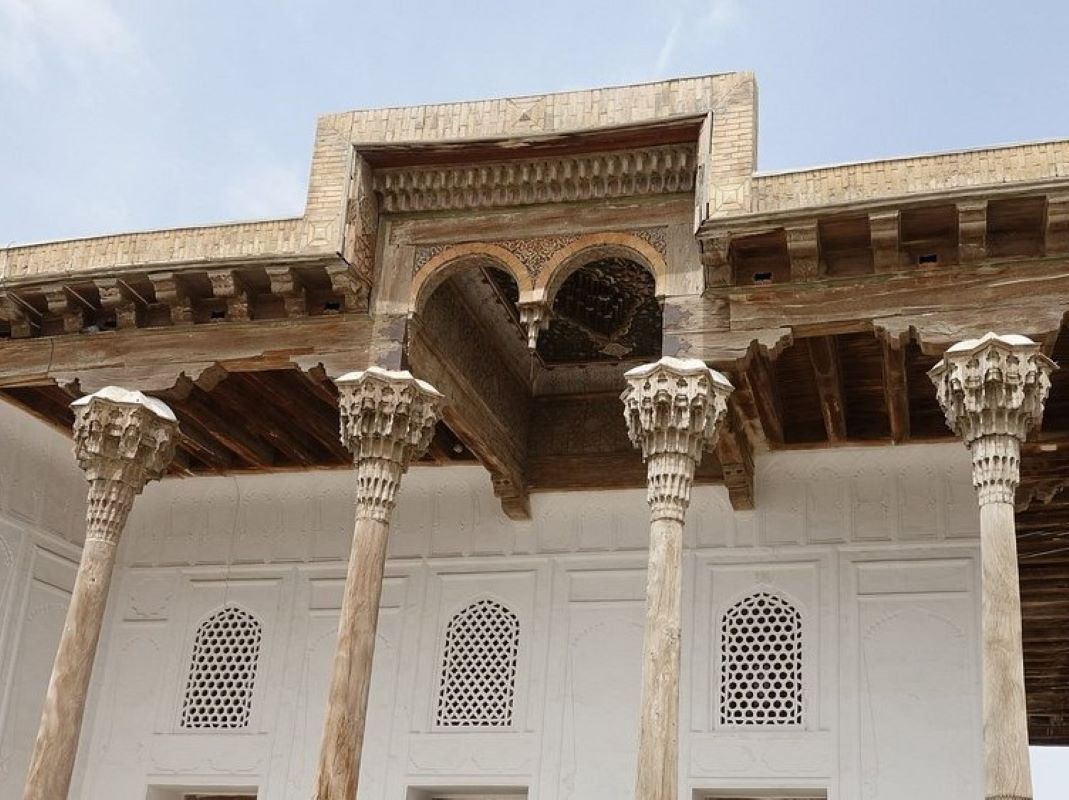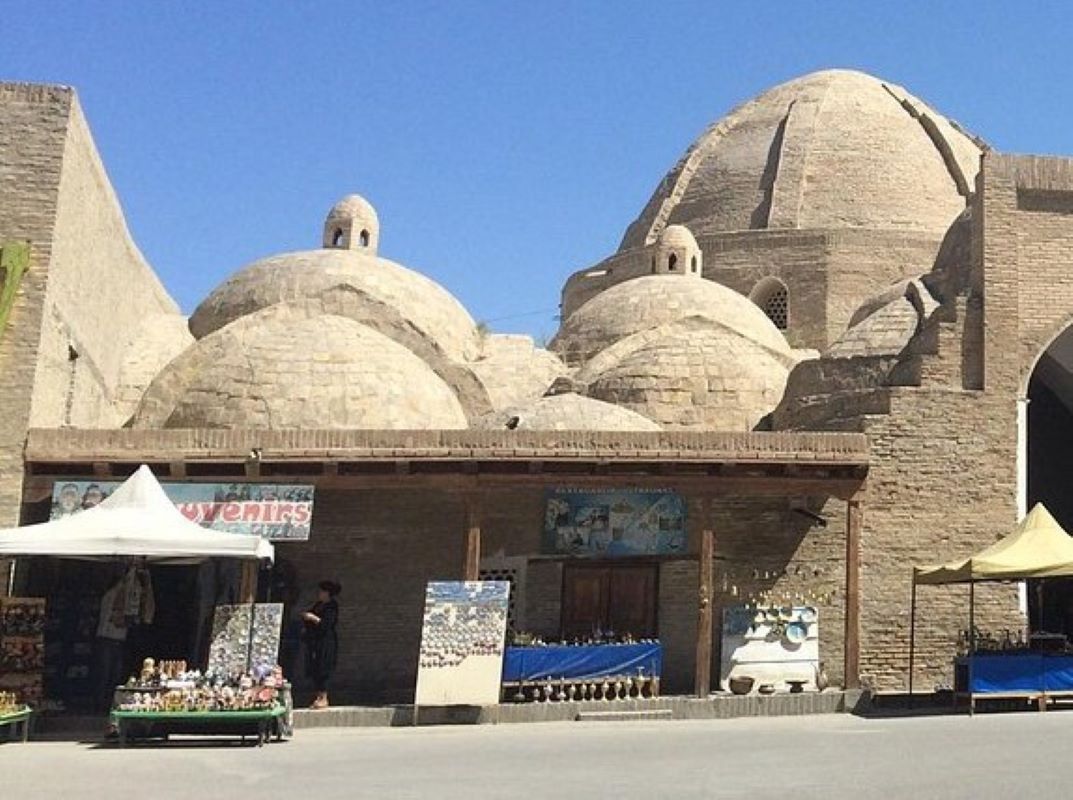The Juma Mosque, a remarkable architectural marvel located within the ancient walls of Itchan Kala, the historic center of Khiva, Uzbekistan, holds a significant place in the city’s rich cultural heritage. Dating back to the 10th century, it stands as one of the oldest and most revered mosques in Khiva, bearing witness to centuries of Islamic worship and spiritual devotion.
Built in the 10th century during the early Islamic period in Central Asia, the Juma Mosque was constructed to serve as a place of congregation and prayer for the Muslim community of Khiva. Its exact date of construction is uncertain, with some historians attributing its origins to the 10th century while others suggest it may have been built or expanded upon in subsequent centuries. Nevertheless, its age and historical significance make it a revered landmark in Khiva’s architectural landscape.
The mosque’s design reflects the traditional Central Asian architectural style prevalent during the medieval period, characterized by its simple yet elegant layout and sturdy mud-brick construction. One of the most distinctive features of the Juma Mosque is its wooden pillars and ceiling, which are adorned with exquisite carvings and paintings depicting geometric patterns, floral motifs, and Arabic calligraphy. These intricate decorations add to the mosque’s aesthetic appeal and spiritual ambiance, creating a sense of reverence and tranquility for worshippers and visitors alike.
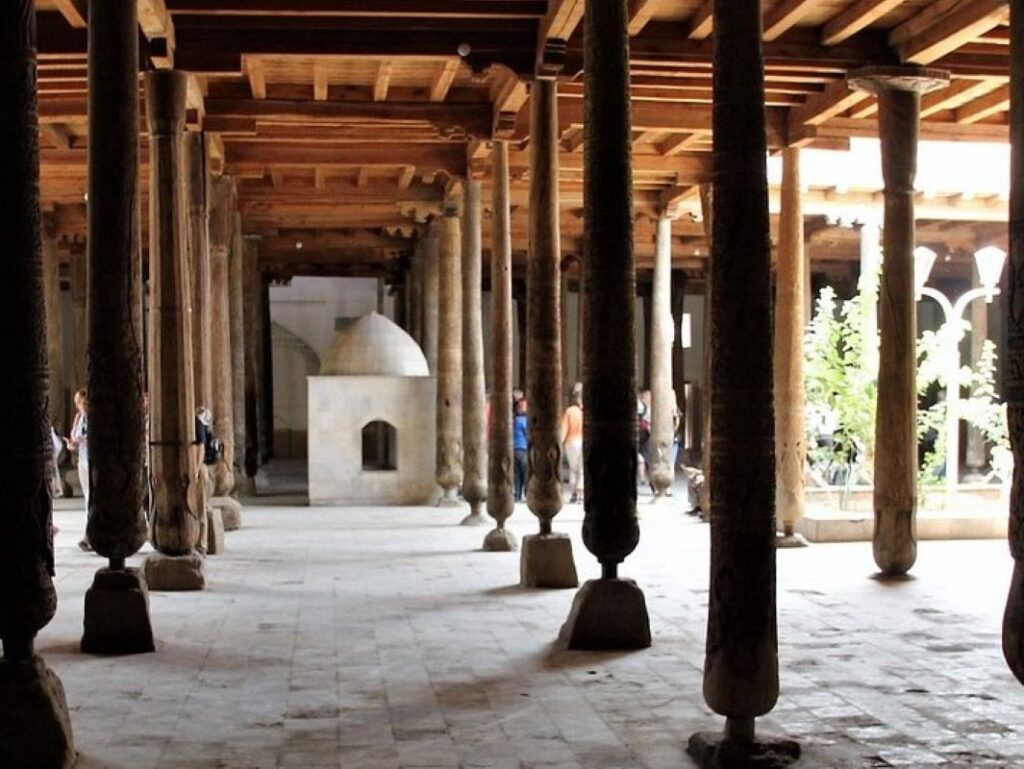
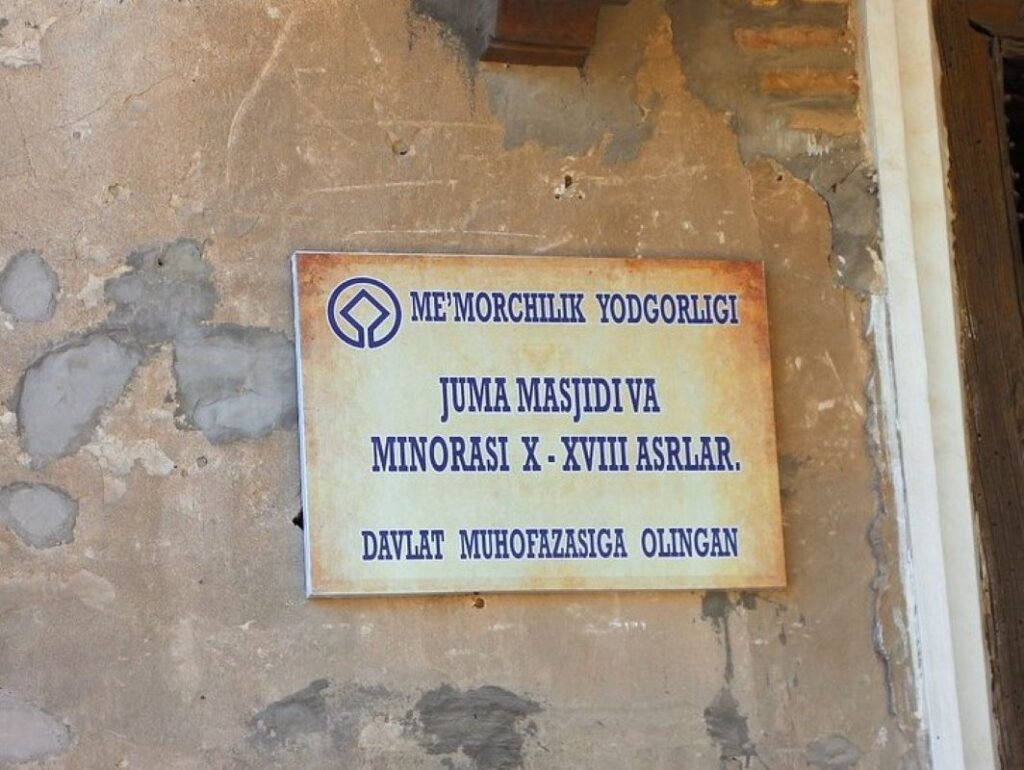
For tourists, the Juma Mosque offers a captivating glimpse into Khiva’s storied past and the enduring legacy of Islamic culture in the region. Visitors can explore the mosque’s serene courtyard, marvel at its ancient architecture, and admire its ornate decorations, all while learning about its historical significance from knowledgeable guides or informational plaques.
Beyond its architectural and historical importance, the Juma Mosque also serves as a vibrant cultural hub, hosting religious ceremonies, cultural events, and educational programs throughout the year. Its central location within Itchan Kala, surrounded by other notable landmarks such as madrasas, mausoleums, and bazaars, makes it a convenient and enriching stop for tourists exploring Khiva’s UNESCO World Heritage-listed old town.
In summary, the Juma Mosque stands as a timeless symbol of faith, community, and cultural heritage in Khiva, inviting visitors to immerse themselves in the beauty and spirituality of this ancient place of worship. Whether admiring its architectural splendor, reflecting on its historical significance, or simply soaking in its tranquil atmosphere, a visit to the Juma Mosque is sure to leave a lasting impression on all who experience it.

